Autoregressive Models
CSE 891: Deep Learning
Vishnu Boddeti
Wednesday November 11, 2020
A Probabilistic Viewpoint
- Goal: modeling $p_{data}$




Bayes Nets and Neural Nets
- Key idea: place a Bayes net structure (a directed acyclic graph) over the variables in the data, and model the conditional distributions with neural networks.
- Reduces the problem to designing conditional likelihood-based models for single variables.
- We know how to do this: the neural net takes variables being conditioned on as input, and outputs the distribution for the variable being predicted.

Autoregressive Models
- First, given a Bayes net structure, setting the conditional distributions to neural networks will yield a tractable log likelihood and gradient. Great for maximum likelihood training! \begin{equation} \log p_{\theta}(\mathbf{x}) = \sum_{i=1}^d \log p_{\theta}(x_i|parents(x_i)) \end{equation}
- But is it expressive enough? Yes, assuming a fully expressive Bayes net structure: any joint distribution can be written as a product of conditionals \begin{equation} \log p(\mathbf{x}) = \sum_{i=1}^d \log p(x_i|x_{1:i-1}) \end{equation}
- This is called an autoregressive model. So, an expressive Bayes net structure with neural network conditional distributions yields an expressive model for p(x) with tractable maximum likelihood training.
Toy Autoregressive Model
- Two variables: $x_1$, $x_2$
- Model: $p(x_1, x_2) = p(x_1) p(x_2|x_1)$
- $p(x_1)$ is a histogram
- $p(x_2|x_1)$ is a multilayer perceptron
- Input is $x_1$
- Output is a distribution over $x_2$ (logits, followed by softmax)
Fully Observed Models
- Direct data modeling
- No latent variables
- Example: Recurrent Neural Networks
- All conditional probabilities described by deep networks

$$\begin{equation}
\begin{aligned}
x_1 &\sim Cat(x_1|\pi) \\
x_2 &\sim Cat(x_2|\pi(x_1)) \\
& \dots \\
x_n &\sim Cat(x_n|\pi(\mathbf{x}_{< n})) \\
p(\mathbf{x}) &= \prod_{i} p(x_i|f(\mathbf{x}_{< i};\mathbf{\theta})) \\
\end{aligned}
\end{equation}$$
One Function Approximator Per Conditional
- Does this extend to high dimensions?
- Somewhat. For d-dimensional data, $\mathcal{O}(d)$ parameters
- Much better than $\mathcal{O}(\exp(d))$ in tabular case
- What about text generation where $d$ can be arbitrarily large?
- Limited generalization
- No information sharing among different conditionals
- Solution: share parameters among conditional distributions. Two approaches:
- Recurrent neural networks
- Masking
Recurrent Neural Networks
RNN as Autoregressive Models
\begin{equation} \log p(\mathbf{x}) = \sum_{i=1}^d \log p(x_i|x_{1:i-1}) \end{equation}
MNIST
- Handwritten digits
- $28\times28$
- 60,000 train
- 10,000 test
- Original: grayscale
- "Binarized MNIST": 0/1 (black/white)

RNN on MNIST
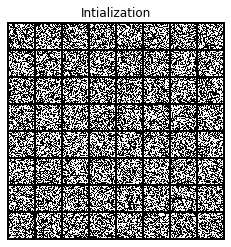
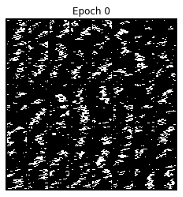

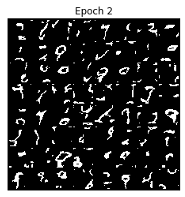
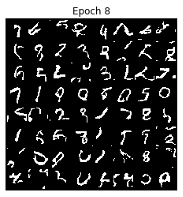

RNN with Pixel Location Appended on MNIST
- Append $(x,y)$ coordinates of pixel in the image as input to RNN

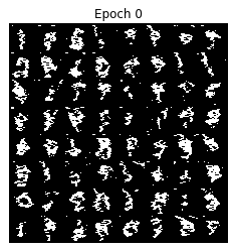
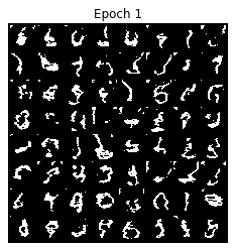


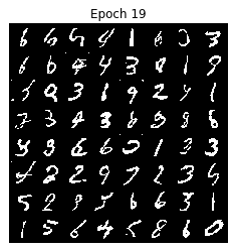
Masking
Masking Based Autoregressive Models
- Second major branch of neural AR models
- Key property: parallelized computation of all conditionals
- Masked MLP (MADE)
- Masked convolutions & self-attention
- Also share parameters across time
Masked Autoencoder for Distribution Estimation (MADE)
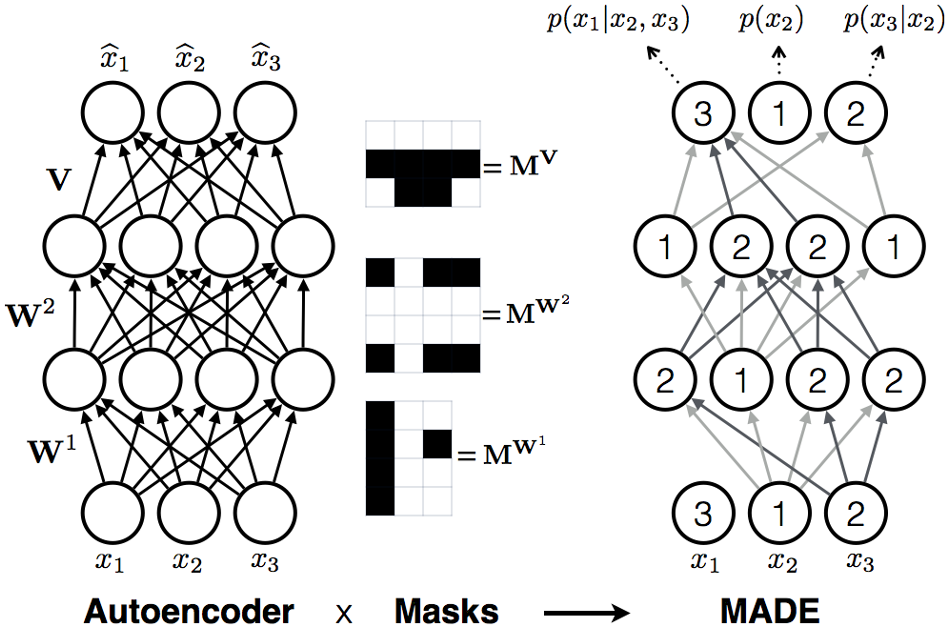
MADE on MNIST

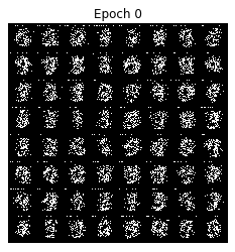
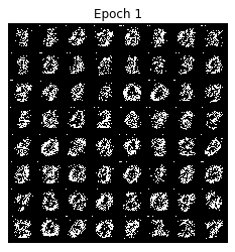

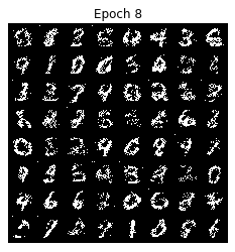
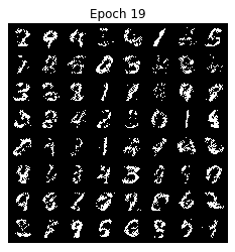
MADE Results

MADE -- Different Orderings
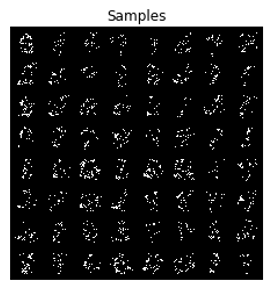
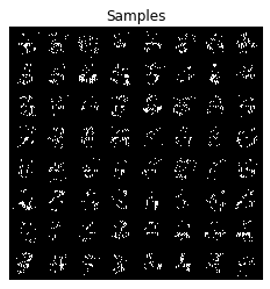
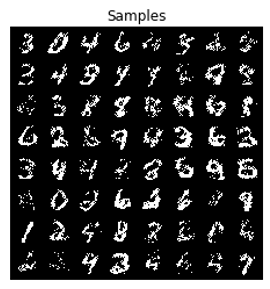

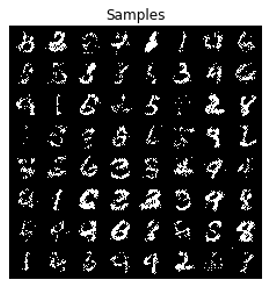
Masked Temporal (1D) Convolution
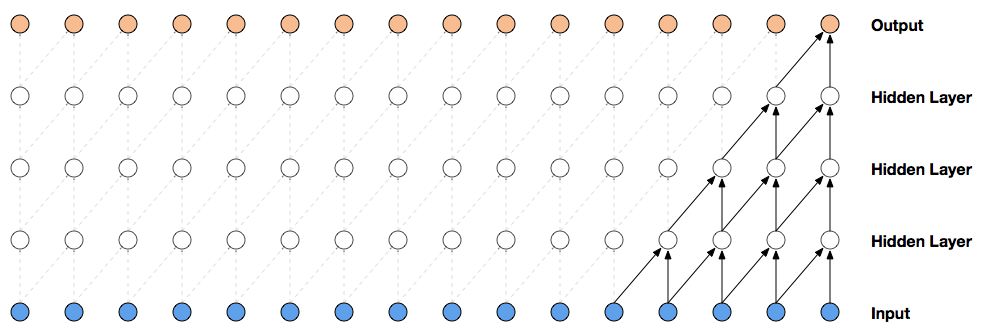
- Easy to implement, masking part of the conv kernel
- Constant parameter count for variable-length distribution!
- Efficient to compute, convolution has hyper-optimized implementations on all hardware
- However
- Limited receptive field, linear in number of layers
WaveNet
- Improved receptive field: dilated convolution, with exponential dilation
- Better expressivity: Gated Residual blocks, Skip connections


WaveNet on MNIST
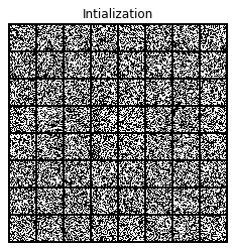

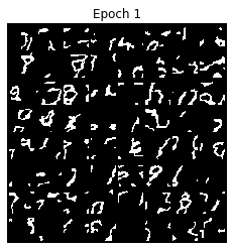



WaveNet with Pixel Location Appended on MNIST
- Append $(x,y)$ coordinates of pixel in the image as input to RNN

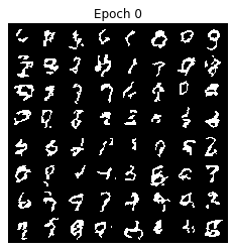


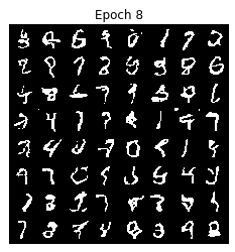

Masked Spatial (2D) Convolution - PixelCNN
- Images can be flatten into 1D vectors, but they are fundamentally 2D
- We can use a masked variant of ConvNet to exploit this knowledge
- First, we impose an autoregressive ordering on 2D images:
- This is called raster scan ordering. (Different orderings are possible, more on this later)
PixelCNN
- Design question: how to design a masking method to obey that ordering?
- One possibility: PixelCNN (2016)
PixelCNN
- PixelCNN-style masking has one problem: blind spot in receptive field
Gated PixelCNN
- Gated PixelCNN (2016) introduced a fix by combining two streams of convolutions
Gated PixelCNN
- Improved ConvNet architecture: Gated ResNet Block
Gated PixelCNN
- Better receptive field + more expressive architecture = better performance
PixelCNN++
- Moving away from softmax: we know nearby pixel values are likely to co-occur!
Recap: Logistic distribution
Training Mixture of Logistics
PixelCNN++
- Capture long dependencies efficiently by downsampling
PixelCNN++
Masked Attention
- A recurring problem for convolution: limited receptive field $\rightarrow$ hard to capture long-range dependencies
- Self-Attention: an alternative that has
- unlimited receptive field!!
- also $\mathcal{O}(1)$ parameter scaling w.r.t. data dimension
- parallelized computation (versus RNN)
Masked Attention
- Much more flexible than masked convolution. We can design any autoregressive ordering we want
- An example:

- Zigzag Ordering
- How to implement with masked conv?
- Trivial to do with masked attention!
Masked Attention + Convolution
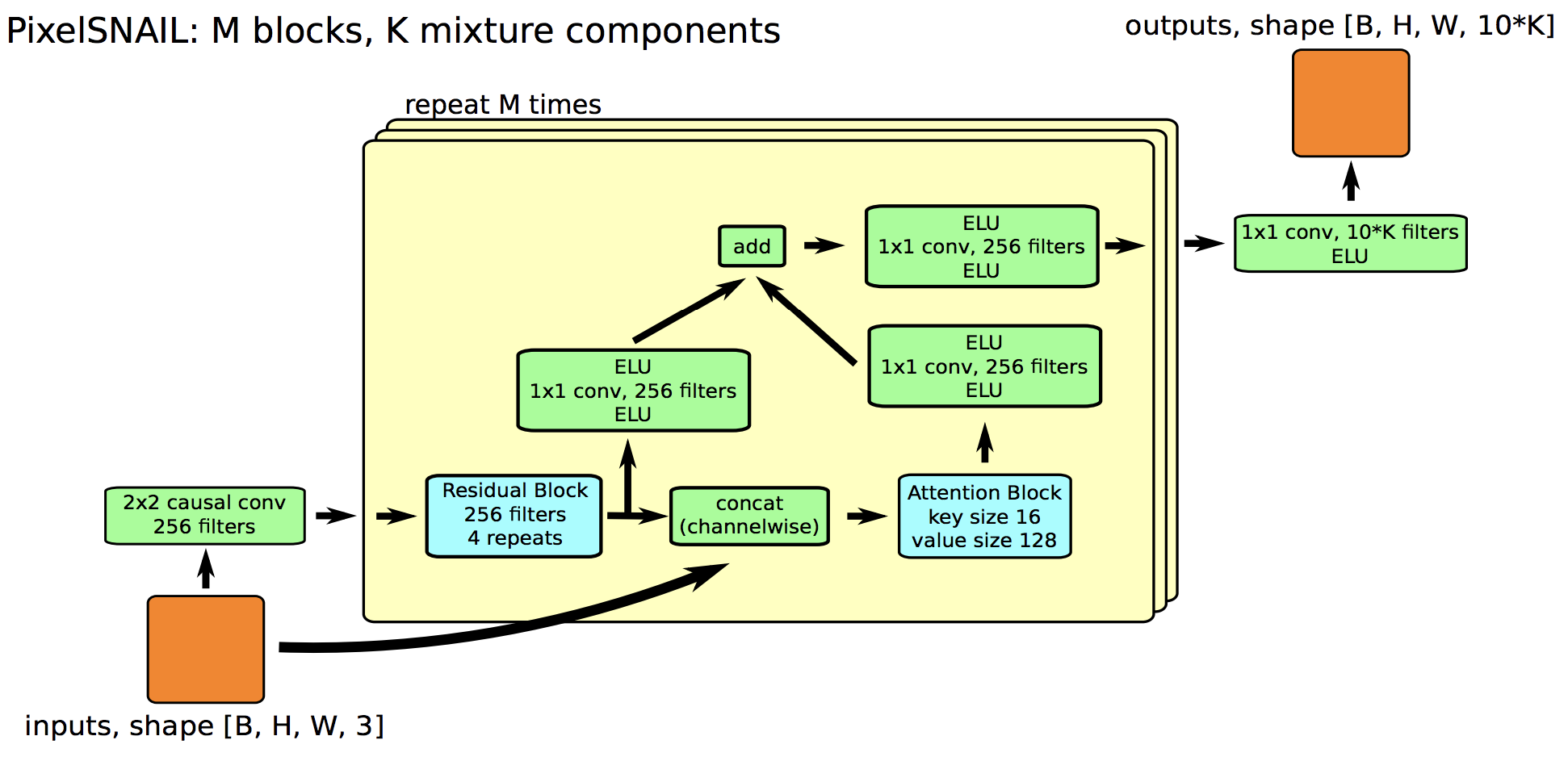
Masked Attention + Convolution


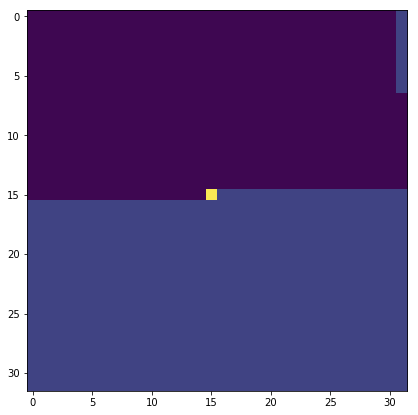
Masked Attention + Convolution
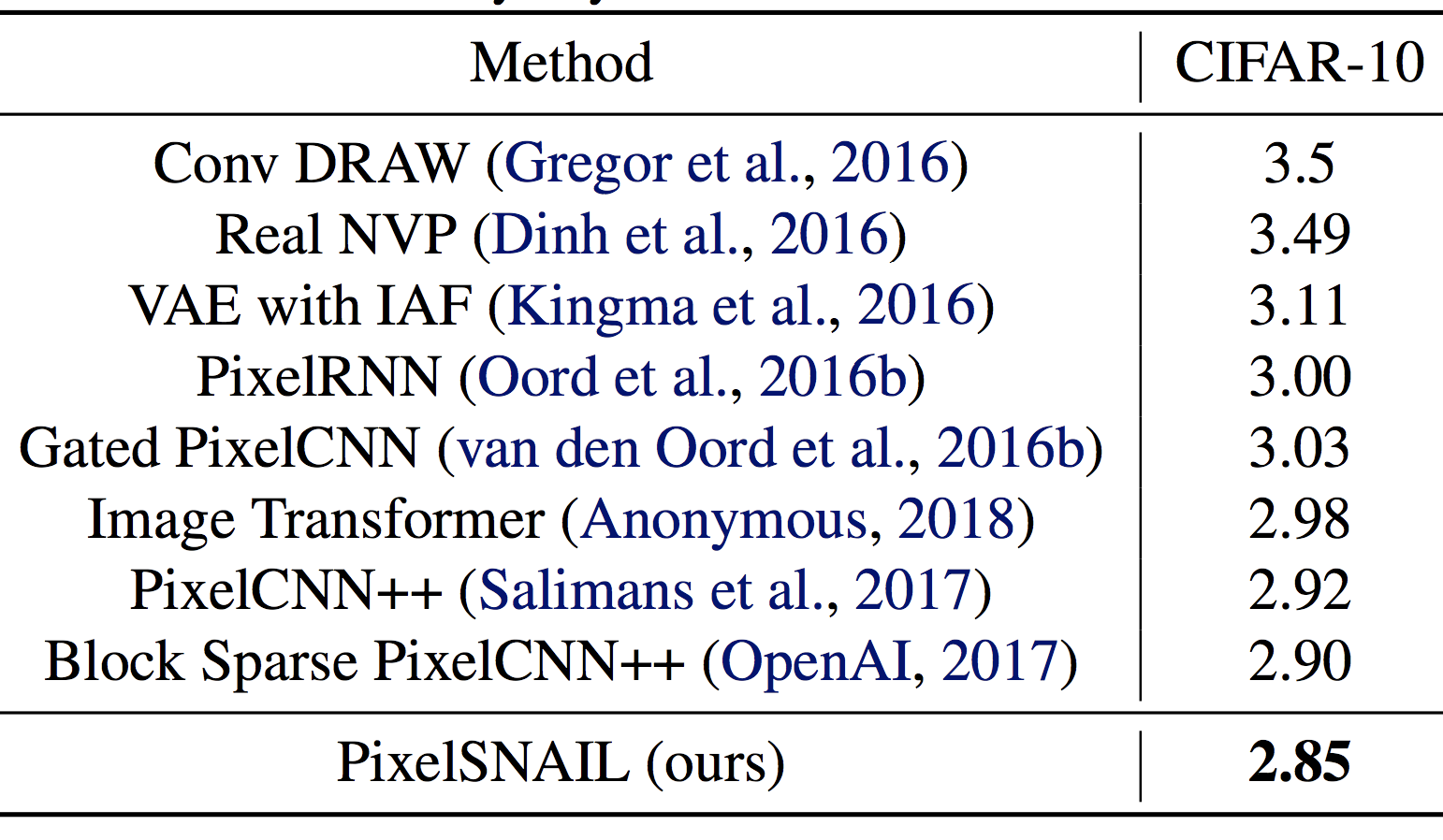
Class Conditional PixelCNN
- How to condition?
- Input: One-hot encoding of the labels
- Then: multiplying by different learned weight matrices in each convolutional layer, and added as a bias channel-wise and broadcasted spatially
Hierarchical Autoregressive Models with Auxiliary Decoders
Image Super-Resolution with PixelCNN

Pixel Recursive Super Resolution
Neural Autoregressive Models: The Good
- Can directly encode how observed points are related.
- Any data type can be used
- For directed graphical models: Parameter learning simple
- Log-likelihood is directly computable, no approximation needed.
- Easy to scale-up to large models, many optimization tools available.
- Best in class modelling performance:
- expressivity - autoregressive factorization is general
- generalization - meaningful parameter sharing has good inductive bias
- State of the art models on multiple datasets, modalities
Neural Autoregressive Models: The Bad
- Order sensitive.
- For undirected models, parameter learning difficult: Need to compute normalizing constants.
- Generation can be slow: iterate through elements sequentially, or using a Markov chain.
- Sampling each pixel = 1 forward pass!
- 11 minutes to generate 16 32-by-32 images on a Tesla K40 GPU
- Solutions
- Faster implementation
- Speedup by breaking autoregressive pattern: create groups of pixels
- $\mathcal{O}(d) \rightarrow \mathcal{O}(\log(d))$ by parallelizing within groups.